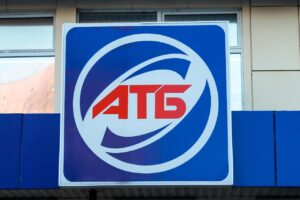
The average rate on long-term mortgage loans in the US rose by 6 basis points last week, hitting a high since late January amid rising US government bond yields. According to the Mortgage Bankers Association (MBA), the average interest rate on 30-year loans for home purchases of up to $806,500 for the week ending May 23 was 6.98% per annum, compared to 6.92% a week earlier.
A year earlier, mortgage rates stood at 7.05%. The number of mortgage applications in the United States fell 1.2% last week after a 5.1% decline the week before. Applications for new home purchases rose 2.7%, while applications for refinancing existing mortgages fell 7.1%.

The European Commission has classified Russia and Belarus as countries with the highest risk level in accordance with the EU Regulation on the prevention of deforestation and forest degradation (EUDR), which is an additional safeguard against their forest products entering the European market, said Viktor Smal, head of the State Forestry Agency of Ukraine.
“The European Commission has published an updated list of countries classified according to risk level in accordance with the EUDR. Ukraine, like leading European timber producers, has been given low-risk status. This creates conditions for investors to come to Ukraine and attract investment, opening up new opportunities for Ukrainian exporters of furniture and other forest products, facilitating their entry into the European market. At the same time, Russia and Belarus are among the high-risk countries, which makes it even more difficult for their products to enter the EU. We are working to ensure that countries involved in gray import schemes for Russian timber are also included in the list of high-risk suppliers,” Smal emphasized.
He noted that despite the war, thanks to digitalization and reforms in the forestry sector, Ukraine has managed to obtain the status of a low-risk exporter on a par with Germany, Latvia, Finland, and Poland.
“This is the result of our systemic reforms and digital transformation in the forestry sector, in particular the introduction of such tools as e-logging tickets, e-certificates of origin, and e-TTN with photo documentation,” said the head of the State Forestry Agency.
As reported, in 2022, the EU imposed sanctions on imports of Russian timber, pulp, paper, other wood products, and furniture. This applies not only to imports from Russia but also to the trading of Russian timber through third countries.
According to an investigation by Earthsight, European furniture manufacturers have purchased more than 500,000 cubic meters of Russian-made birch plywood during the war, circumventing sanctions.
World Forest ID experts found that 46% of birch products supplied to the UK and labeled as originating from Ukraine, Poland, Estonia, and Latvia were actually produced in Belarus and Russia.
The EUDR, which will come into force for medium and large companies on January 1, 2026, stipulates that products imported into the EU must not contribute to deforestation or forest degradation. Countries are classified according to risk level — low, standard, and high. Low risk status simplifies exports, reduces the regulatory burden, and enhances the competitiveness of Ukrainian producers in the EU market.
https://interfax.com.ua/news/general/1074828.html

According to the OpenDataBot rating, the Fora chain has become the largest employer in the Kyiv region, with 9,100 employees.
The chain was founded in 2002 and is part of the Fozzy Group (owned by Vladimir Kostelman, Oleg Sotnikov, and Arkady Geller).
The company actively develops its corporate culture, employing veterans, young people, and people with disabilities.

JSC “MOTOR SICH” topped the rating of the largest employers in the Zaporizhzhia region according to OpenDataBot, based on the official financial statements of companies.
The aircraft engine manufacturing plant was founded in 1907. Since 2022, it has been owned by the Ukrainian state. Previously, it was controlled by the Boguslaev family.
Number of employees: 13,300. Financial indicators: The company’s revenue in 2023 is about UAH 4 billion. The number of employees decreased by 8% compared to the previous year. The enterprise is strategic for Ukraine’s defense industry.

According to the OpenDataBot rating, compiled based on data from the State Statistics Service, ATB Market has become the largest employer in the region in terms of the number of employees.
A supermarket chain operating as a discounter. It was founded in 1993. As of 2024, it is the largest employer in the region with 46,084 employees.
Owners: The ATB Group of Companies is controlled by businessmen Gennady Butkevich, Viktor Karachun, and Evgeny Ermakov.
Financial indicators: As of the end of 2023, the company’s turnover exceeded UAH 200 billion. The company is consistently ranked among the top five retailers in the country.
Activities: Over 1,200 stores in more than 300 cities. In 2023, the number of employees increased by 4.5%.